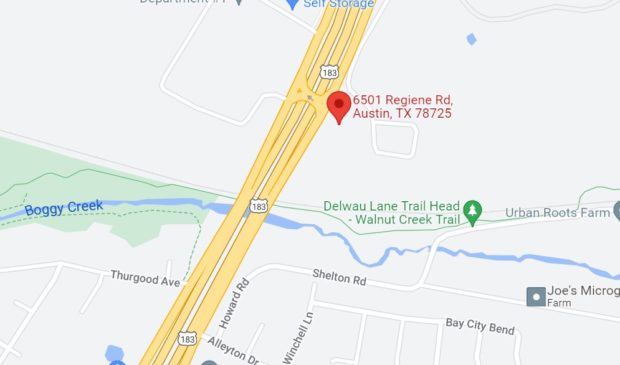Zoning for east side brewery wins final approval
Friday, February 25, 2022 by
Jo Clifton City Council gave final approval Thursday for zoning to allow construction of a huge development, including a new brewery and 275-foot-tall building at 6705 and 6501 Regiene Road on the city’s east side. The plan for the 16-acre site includes 1 million square feet of office, retail and restaurant space, artist workshops and up to 742 apartments. The developer, Daryl Kunik, has promised that 10 percent of the rental units will be affordable for families earning 60 percent of the median family income.
Although the zoning is Limited Industrial (LI-PDA-NP), the only industrial use planned for the site is the brewery. The property is within Council Member Natasha Harper-Madison’s District 1 and she has been a strong proponent of the project.
While the zoning change is on property adjacent to Ed Bluestein Boulevard and close to the Walnut Creek Greenbelt, it is not next to any single-family homes or apartment complexes. It is also adjacent to right of way for the future Project Connect Green Line, and Leah Bojo, who represents developer Kunik, said she is coordinating with Capital Metropolitan Transportation Authority on where a nearby rail stop will be.
Several speakers told Council it should deny the request based on concerns about displacement. One of those opposing the zoning change was Melonie House Dixon, co-chair of the East MLK neighborhood contact team. Although her team’s area does not include the Regiene Road property, she said they “have taken on the responsibility to advocate for surrounding communities.”
During a previous hearing on the case, Dixon said, Harper-Madison advised her group to meet with the developer. They did meet, but didn’t reach agreement on everything.
Harper-Madison told her colleagues that the contact team’s effort convinced the developer to adhere to the Better Builder Program. They worked to make sure it includes $3.4 million of affordable housing, with 10 percent of the units restricted to people earning 60 percent of the median family income. They also worked for tenant protections and community space, she said. “Most notably, the contact team and applicant worked out a plan in partnership with Austin Creative Alliance to make this, to my knowledge, the first project in the city of Austin to feature affordable commercial space.”
The contact team was seeking a community room that would be open to different groups for meetings on the property. They also sought donations to a variety of community groups and businesses, though that last request was denied, according to Dixon and Harper-Madison.
In a letter to the contact team, Kunik wrote, “You have requested that the project contain a community room/space that would be available for reservation and use by community groups. I believe that we can incorporate that concept in our 10,000 feet of creative space at 300 SF for 40 years, increased from the initial proposal of 250 SF for 15 years.”
The agreement with the Workers Defense Project impressed Council Member Vanessa Fuentes, who said she was concerned about rising displacement, “but part of the reason I’m supporting this is that it does have significant options for our creatives, knowing we are a creative city and that this project will have dedicated space for our arts and creative professionals here in Austin and that it will have more affordable commercial space for our creative community.”
Harper-Madison, who attended Thursday’s meeting online, said she had received a “giant stack” of letters from the community supporting the project “because they realize how badly we need affordable space.” She went on to explain the disagreement between the contact team and the developer, saying, “prior to our first reading vote, a co-chair of the contact team contacted my office to confirm they would in fact support the applicant’s request of 275 feet. But then the contact team asked the developer to make financial contributions to various organizations – completely unrelated to the project – and to lower the median family (income) percentage for affordable housing to 45 percent. When the developer declined, it appears the support changed,” she said.
“I believe we need to try to get the most out of these developments for our community but we also need to recognize a single development will not be the silver bullet that will address our community’s needs. It will take a holistic approach to continue conversations about the concerns expressed here today.”
Harper-Madison added, “There will be two new deeply affordable housing developments in that very same area that will provide housing units at 30 to 50 percent MFI range. The tax revenue that will be generated from this development will fund social services, community programs and other community needs. So the question before us is whether the requested entitlements are appropriate for this property, and I think a 275-foot height limit works entirely harmoniously with this isolated … little, tiny nook.”
The Austin Monitor’s work is made possible by donations from the community. Though our reporting covers donors from time to time, we are careful to keep business and editorial efforts separate while maintaining transparency. A complete list of donors is available here, and our code of ethics is explained here.
You're a community leader
And we’re honored you look to us for serious, in-depth news. You know a strong community needs local and dedicated watchdog reporting. We’re here for you and that won’t change. Now will you take the powerful next step and support our nonprofit news organization?




